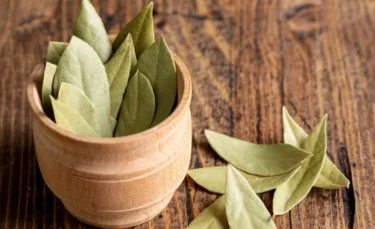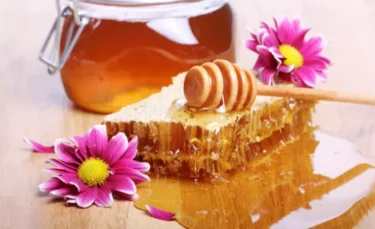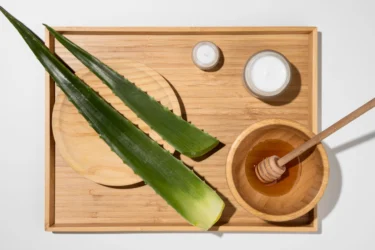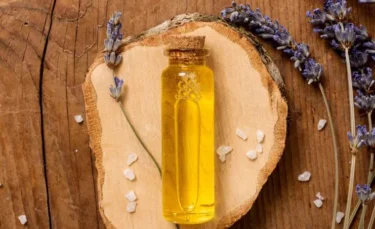Effective Home Remedies for Bee Sting
By Dr Anuja Bodhare +2 more

Get,

to manage your symptom
Get your,


4 Cr+ families
benefitted

OTP sent to 9988776655



You’ve successfully subscribed to receive
doctor-approved tips on
Whatsapp

Get ready to feel your best.

Hi There,
Download the PharmEasy App now!!


Register to Avail the Offer
Send OTPBy continuing, you agree with our Privacy Policy and Terms and Conditions

Hi There,
Sign up on PharmEasy now!!
Trusted by 4 crore+ families

OTP sent to 9988776655



You have unlocked 25% off on medicines




Code: NU25
By Dr Anuja Bodhare +2 more
Table of Contents
You are enjoying a fun day out in the garden, it’s the weekend, and you suddenly feel this stinging, burning sensation on your neck, and it turns out it’s a bee sting. Bees can sting when they are disturbed or you upset them. Bee stinger has venom, which gives you the itch and burning sensation.
Honeybees have this special hook attached to their stinger. When the honeybee tries to fly away after stinging, the stinger gets broken, and the honeybees die. Some people may develop allergic reactions to bee stings. Contact your healthcare provider immediately if you notice any allergies after being stung by a bee1,2. To take care of a bee sting, you can use the home remedies mentioned below.

When you get stung by a honeybee, the stinger gets embedded in the skin. The stinger contains a substance called venom that causes the symptoms of a bee sting. The longer the stinger stays embedded in the skin, the more venom is released1,2.
If you are stung by a honeybee, you may experience symptoms in different parts of your body, as mentioned below:
Bee stings can become life threatening, because there are chances that the person can land up into hypersensitivity reaction,therefore every bee sting warrants a physcian examination and proper treatment so that any life threatening condition can be averted.You cannot rely on home remedies totally
Dr. Nikhil Yadav, MBBS MD, CCEBDM
The home remedies mentioned below can be used for dealing with a honey bee sting.

Check if the stinger is still attached to your skin. You need to remove this stinger as quickly as possible to prevent further harm. The longer the stinger stays embedded in the skin, it will release more venom. Be careful while removing the stinger. Avoid using tweezers. The tweezer might squeeze the sting, releasing more venom into the skin. Remove the stinger by scraping it with gauze, or you can use your fingernails4.

Placing ice (wrapped in cloth) or ice packs at the affected area will help you reduce the swelling of the sting. Make sure to wash the site with soap and water first. If you notice swelling on other parts of your body, such as the neck or face, you need to reach out to your healthcare provider as it might signify an allergic reaction. You might also experience nausea, hives, difficulty breathing, and dizziness if you have an allergic reaction4.

Although bees sting only once most of the time, it is best to avoid getting stung again to prevent the condition from worsening. If you are stung by a bee, you need to walk away calmly. Staying calm will help you avoid getting stung again4.

Patta ajwain, also known as Indian borage or Indian mint in English, is a medicinal herb used for various skin and health conditions. You can crush the leaves of Patta ajwain to make a paste. You can apply this crushed paste to the affected area to get relief from bee stings5. It will help to heal the sting. Indian borage leaves have potent antibacterial properties that can help prevent the sting from getting infected6.

Bay leaves, or Tej Patta, are a common ingredient in many Indian kitchens. This spice has many health benefits. You can make a paste of bay leaves using coconut oil and bay leaf powder. This paste can be applied on the site to get relief from the symptoms of bee stings5. Bay leaves possess anti-inflammatory, antibacterial, and pain-relieving properties. These properties might help to reduce the swelling and pain and help prevent the sting from getting infected7.

Honey has been used as a remedy for many skin conditions since ancient times. Honey provides many benefits; it can soothe the skin and aid in wound healing. Honey is also known to possess antiseptic properties that help prevent the growth of bacteria8. Applying honey to the bee sting can help to soothe and heal the skin and provide relief from the symptoms of a bee sting.

Applying aloe vera can help to deal with insect bites. Aloe vera can also relieve swelling and itching on the skin. You can slice open the aloe vera leaf and apply the gel to the area of the sting to soothe it9. Make sure to use pure aloe vera gel. Many aloe vera gel-containing products contain fragrances and other chemicals that irritate the skin10.

Lavender oil is an effective remedy for many skin conditions. It is also effective in managing insect bites11. Lavender oil is an effective pain-killer; it might help with the pain associated with the bee sting12. You can apply lavender oil after diluting it with other carrier oils like olive and coconut oil. However, avoid using lavender oil directly as it might cause skin irritation and other allergic reactions.
Also Read: Effective Home Remedies for Lice Removal
Most people who get stung do not experience any severe effects. However,
You need to immediately contact your healthcare provider.
Also Read: Simple Home Remedies For Pinworms
Getting stung by a bee can be irritating, and you might also feel burning and itching at the sting site. If you get stung by a honeybee, try to stay calm and remove the stinger first. Herbal remedies like honey, aloe vera gel, bay leaves, or Indian borage can be used to take care of a bee sting at home. Most of the time, people do not have any severe symptoms after getting stung. Still, some people might develop allergic reactions to bee stings. If you develop signs of allergy, such as hives, difficulty in breathing, sudden drop in blood flow through the body, and swelling in the throat, lips, or tongue after getting stung, you need to reach out to your healthcare provider immediately.
There are many natural remedies for bee stings. You can use bay leaves or Indian borage leaves to relieve bee stings. Honey, aloe vera gel, and lavender oil can also take care of a honeybee sting. Make sure to dilute the lavender oil before using it. Dilute the lavender oil with some carrier oil like coconut or olive. You can also use ice packs to reduce the swelling and get relief5,8,11.
Some people may show allergic reactions to bee stings. This allergic reaction may include difficulty in breathing, hives, shock (sudden drop in blood flow through the body), and swelling in the throat, lips, or tongue. If you or someone you know show these signs, contact your healthcare provider or physician immediately3,4.
Yes, ice can be used to take care of the bee sting as it helps reduce the swelling at the affected site4. You can wrap the ice in a cloth or use an ice pack.
You should be careful when removing the stinger. The stinger contains a substance called venom. Squeezing the stinger might release more venom into your skin. So, avoid using tweezers to remove the stinger. You can remove the stinger by scraping it with the help of gauze4.
Honey has skin-soothing, antiseptic, and wound-healing properties. Applying honey to the stung site might help with the swelling, aid in healing and help prevent the site from getting affected8.
1. Nemours KidsHealth. Hey! A Bee Stung Me! (for Kids) [Internet]. [cited 2022 Jun 1]. Available from: https://kidshealth.org/en/kids/bee.html
2. MedlinePlus Medical Encyclopedia. Bee, wasp, hornet, or yellow jacket sting: [Internet]. [cited 2022 Jun 1]. Available from: https://medlineplus.gov/ency/article/002847.htm
3. Mount Sinai – New York. Bee poison Information [Internet]. [cited 2022 Jun 1]. Available from: https://www.mountsinai.org/health-library/poison/bee-poison
4. American Academy of Dermatology Association. How to treat a bee sting [Internet]. [cited 2022 May 31]. Available from: https://www.aad.org/public/everyday-care/injured-skin/bites/treat-bee-sting
5. Ayush Division. Ayurveda offering Herbal healing. Available from: https://www.esic.nic.in/attachments/publicationfile/7d11b02e5abb4717d53b4ce05efabd21.pdf
6. Gupta SK, Negi PS. Antibacterial Activity of Indian Borage (Plectranthus amboinicus Benth) Leaf Extracts in Food Systems andӬAgainst Natural Microflora in Chicken Meat. Food Technology and Biotechnology [Internet]. 2016 Jan 1 [cited 2022 Jun 14];54(1):90. Available from: https://www.ncbi.nlm.nih.gov/pmc/articles/PMC5105625/
7. Batool S, Khera RA, Hanif MA, Ayub MA. Bay Leaf. Medicinal Plants of South Asia [Internet]. 2020 Jan 1 [cited 2022 Jun 14];63. Available from: https://www.ncbi.nlm.nih.gov/pmc/articles/PMC7152419/
8. Burlando B, Cornara L. Honey in dermatology and skin care: a review. J Cosmet Dermatol [Internet]. 2013 Dec [cited 2022 May 31];12(4):306–13. Available from: https://pubmed.ncbi.nlm.nih.gov/24305429/
9. Bhowmik D. Aloe Vera: The Miracle Plant Its Medicinal and Traditional Uses in India. Journal of Pharmacognosy and Phytochemistry [Internet]. 2012;1(4):119–26. Available from: https://www.researchgate.net/publication/304253232_Aloe_Vera_The_Miracle_Plant_Its_Medicinal_and_Traditional_Uses_in_India
10. Cleveland Clinic. Itchy Skin? Try These 7 Home Remedies – Cleveland Clinic [Internet]. [cited 2022 Apr 19]. Available from: https://health.clevelandclinic.org/home-remedies-for-itchy-skin/
11. Cavanagh HMA, Wilkinson JM. Biological activities of Lavender essential oil. Phytotherapy Research [Internet]. 2002 Jun 1 [cited 2022 May 31];16(4):301–8. Available from: https://onlinelibrary.wiley.com/doi/full/10.1002/ptr.1103
12. Koulivand PH, Khaleghi Ghadiri M, Gorji A. Lavender and the Nervous System. Evidence-based Complementary and Alternative Medicine : eCAM [Internet]. 2013 [cited 2022 Jun 14];2013. Available from: https://www.ncbi.nlm.nih.gov/pmc/articles/PMC3612440/
Disclaimer: The information provided here is for educational/awareness purposes only and is not intended to be a substitute for medical treatment by a healthcare professional and should not be relied upon to diagnose or treat any medical condition. The reader should consult a registered medical practitioner to determine the appropriateness of the information and before consuming any medication. PharmEasy does not provide any guarantee or warranty (express or implied) regarding the accuracy, adequacy, completeness, legality, reliability or usefulness of the information; and disclaims any liability arising thereof.
Links and product recommendations in the information provided here are advertisements of third-party products available on the website. PharmEasy does not make any representation on the accuracy or suitability of such products/services. Advertisements do not influence the editorial decisions or content. The information in this blog is subject to change without notice. The authors and administrators reserve the right to modify, add, or remove content without notification. It is your responsibility to review this disclaimer regularly for any changes.
Comments

Leave your comment...
You may also like
Comments